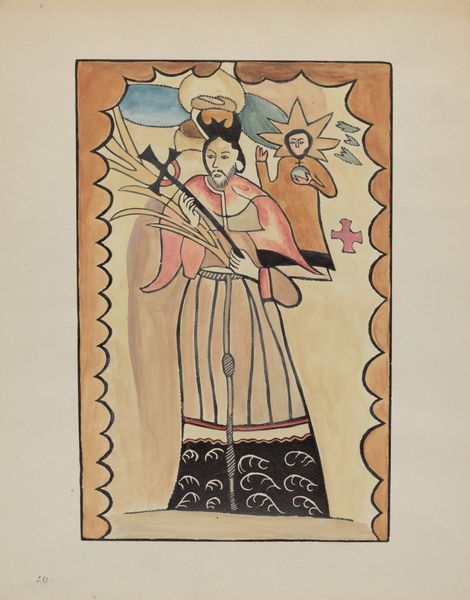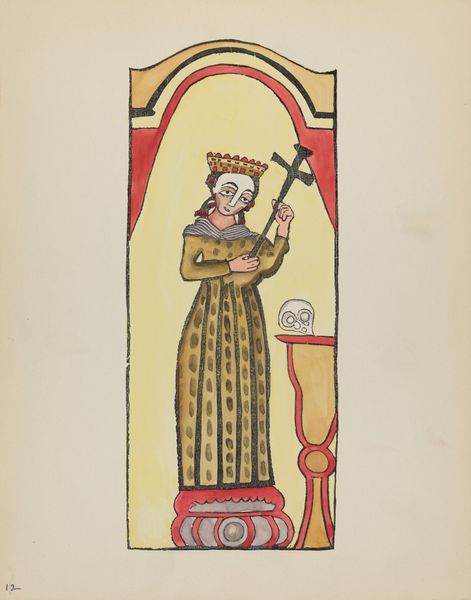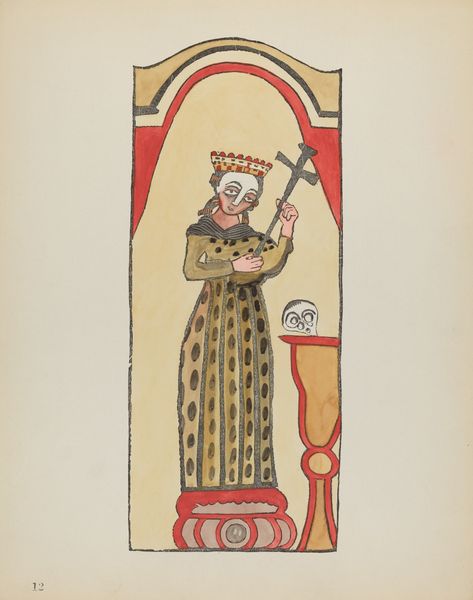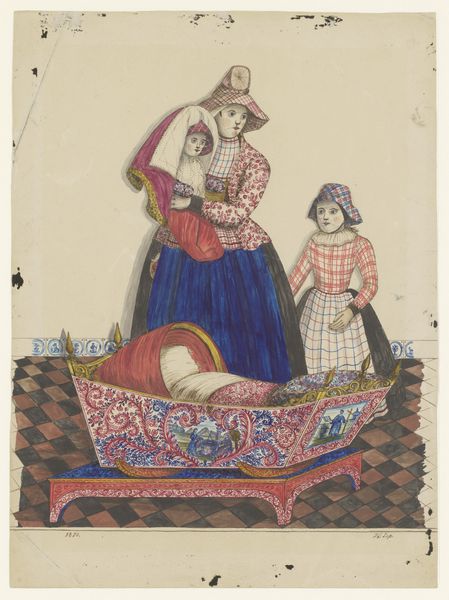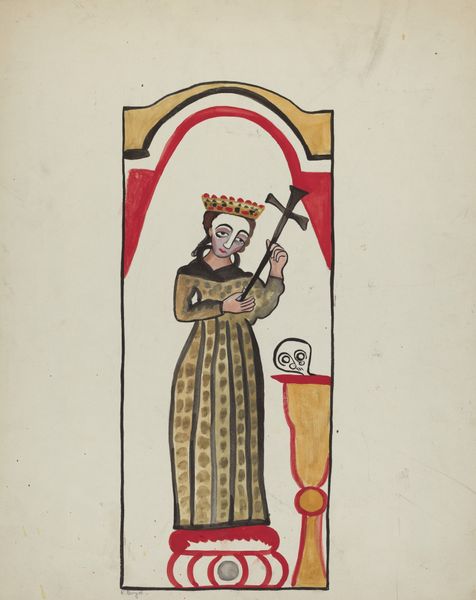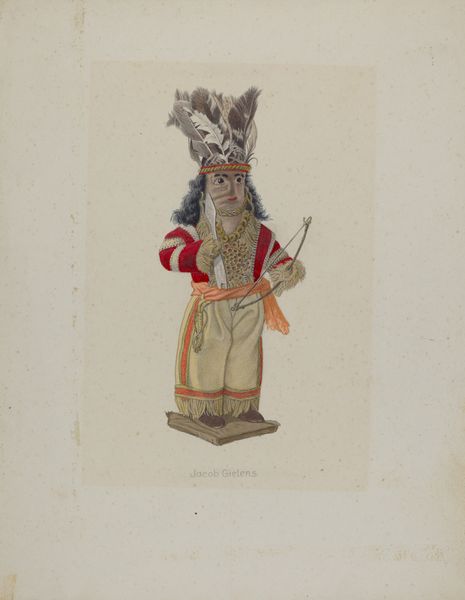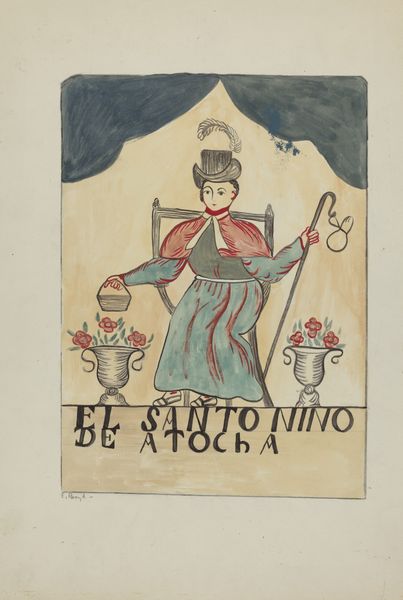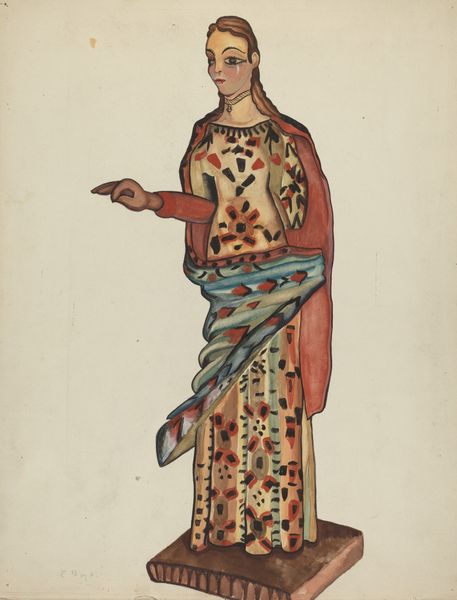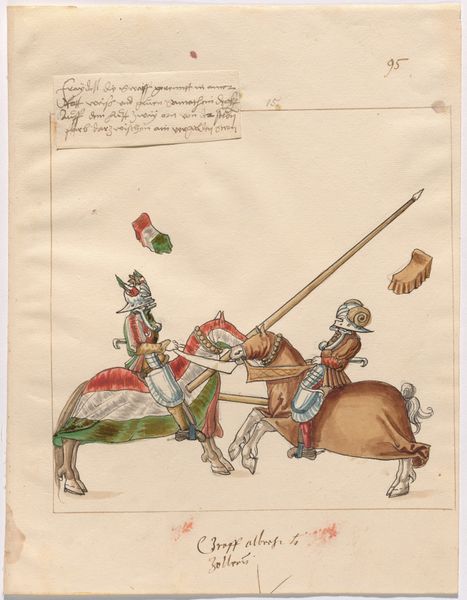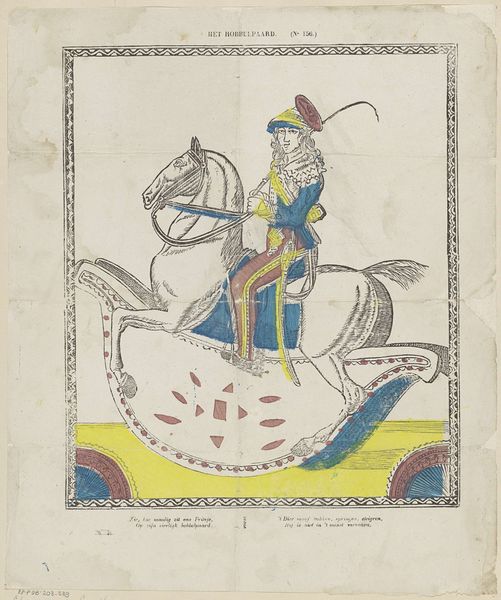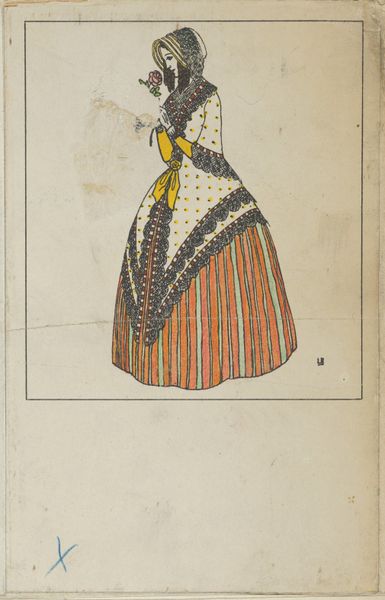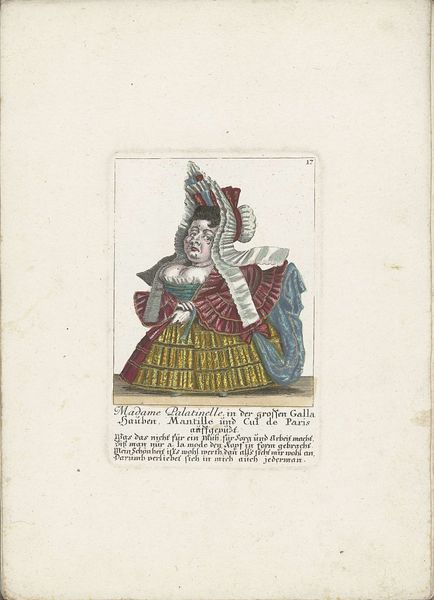
drawing, watercolor
#
drawing
#
caricature
#
caricature
#
indigenism
#
figuration
#
watercolor
#
folk-art
#
watercolor
Dimensions: overall: 36.5 x 28.8 cm (14 3/8 x 11 5/16 in.)
Copyright: National Gallery of Art: CC0 1.0
Curator: I find "Retablo," created between 1935 and 1942 by E. Boyd, quite evocative in its construction. What are your immediate thoughts? Editor: It feels strangely archaic, Curator. Primitive, almost intentionally so, yet there’s a careful application of watercolor giving it an unusual weight. It looks simultaneously reverent and…off. Curator: I agree; its seeming naivete belies the complexity of its composition. Notice the central figure, likely a saint given the attributes. The careful placement against a layered background draws your eye through the plane. The rough frame acts as a grounding mechanism, essential to how we view the form itself. Editor: You say rough, I see intentional. The medium and its handling are interesting, like the artist deliberately embraces imperfection. What pigments are at play? How was the paper prepared? Was it locally sourced, readily available? Its humble, folksy aesthetic suggests a deliberate embrace of available materials. The act of creation seems almost as important as the iconic imagery. Curator: Perhaps. Considering its era, Boyd’s employment of indigenous visual language reflects an interest in redefining identity and form. Its indigenist stylistic choices resonate as an act of self-determination. Editor: Exactly. We can't ignore the social conditions informing the use of 'folk-art' as a way to make art. How was this work perceived by local populations at the time? Curator: That is, of course, an invaluable contextual consideration, specifically as it relates to its function as objecthood. The very title "Retablo," indicative of a devotional painting, gives pause to reflect on how these factors would relate. Editor: Precisely. When thinking about production, how would these objects act within the landscape, how did the artist consider materials to deliver the historical folk image? Curator: Indeed, a fascinating perspective—one which significantly widens our interpretation of E. Boyd’s aims here, wouldn't you say? Editor: Without question. This brief immersion has brought forth ideas concerning how labor, belief, and accessible mediums shape art, allowing a greater understanding of it beyond a superficial examination.
Comments
No comments
Be the first to comment and join the conversation on the ultimate creative platform.
